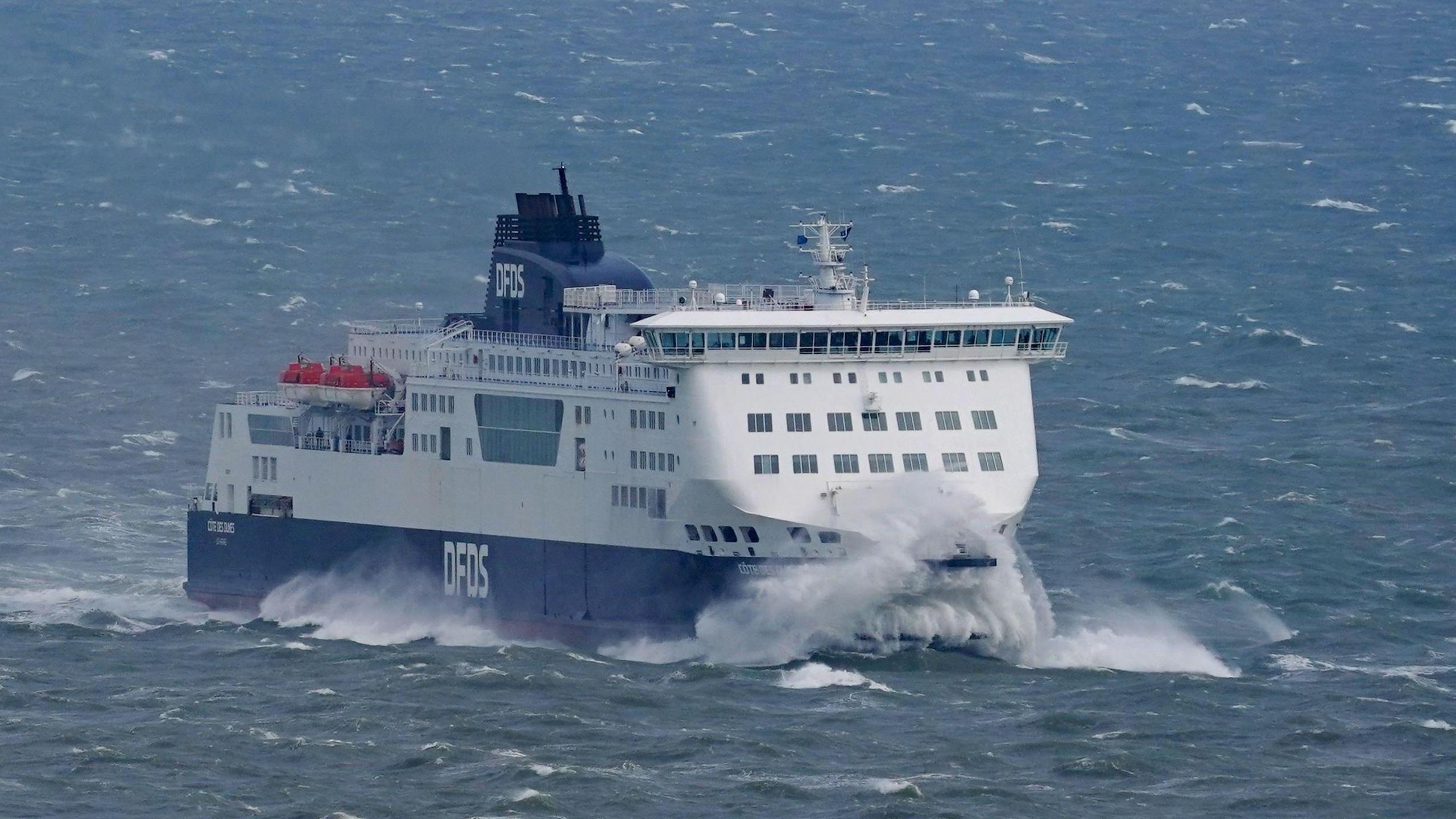How Newhaven's ferries saved wounded WW1 soldiers
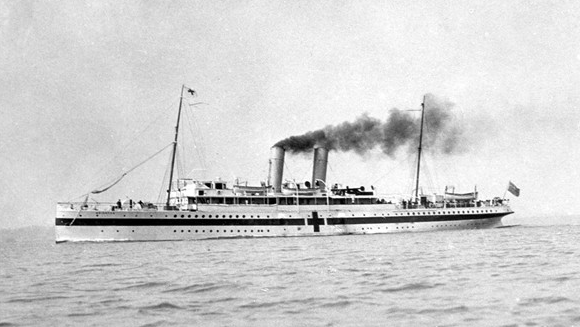
The SS Brighton was one of three passenger ferries in Newhaven to become a hospital ship
- Published
The Newhaven to Dieppe ferry service has been taking passengers across the English Channel for more than 175 years, but throughout World War One, the service took on a very different duty.
Everything a nation needed to fight a war on foreign soil left on vessels which departed from Newhaven Port up to 20 times a day.
Inevitably, casualties of the war needed to return home, which saw 77 UK ships requisitioned by the Royal Navy, including three of Newhaven’s passenger ferries.
World War One historian Chris Kempshall, from Brighton, said the ferries were designed "to take wounded from France to England, treat their wounds along the way, keep them comfortable and keep them alive”.
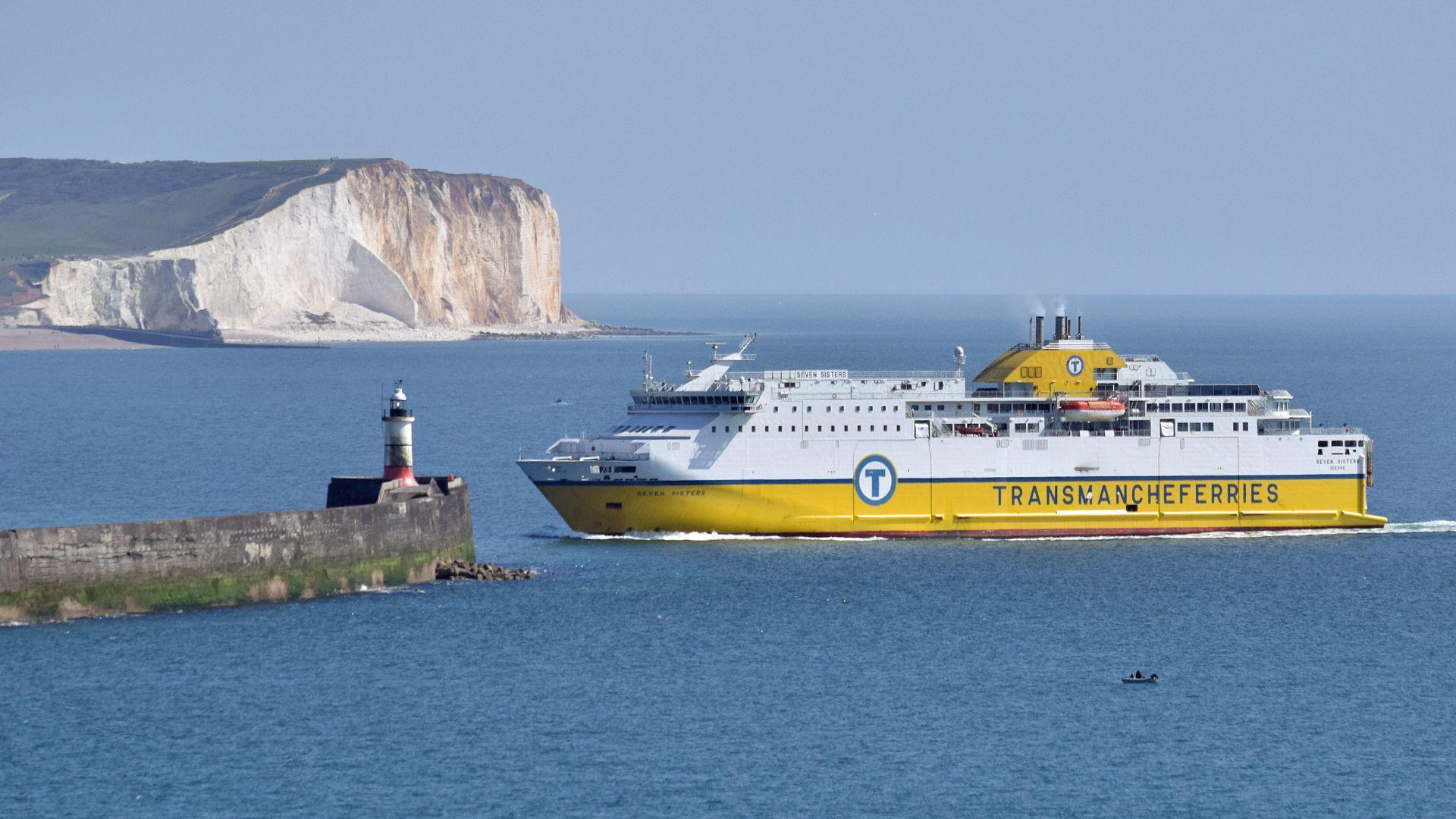
A modern DFDS ferry arriving into Newhaven Port
The SS Brighton, SS Newhaven and SS Dieppe were painted white and fitted with approximately 140 beds and additional room for the walking wounded.
Sister Kathleen Mann worked aboard a hospital ship. She recalled one particularly sad crossing in her diary.
“We lost a patient this morning after he'd had two operations, poor boy,” she wrote.
“It was sad, he had been through so much (gas gangrene). It was horribly sudden."
Treaty of Versailles
She continued: “I witnessed a burial at sea for the first time that day. It was held on the end deck after lunch, the body being placed on a slanting board, covered with a Union Jack.”
Once back in Newhaven, the wounded were transferred to hospital trains at the railway station, as documented in the East Sussex News in September, 1914.
A reporter wrote: “As the splendidly equipped train drew out of the station, the soldiers and others who were on duty showed their sympathy and good wishes by continued cheering.”
After the war, the ships began repatriating service personnel. In fact, the SS Brighton brought Prime Minister David Lloyd George back to England after signing the Treaty of Versailles.
Today, Newhaven’s life as a bustling wartime port is hard to imagine, but its importance as a gateway to Europe lives on.
Follow BBC Sussex on Facebook, external, on X, external, and on Instagram, external. Send your story ideas to southeasttoday@bbc.co.uk, external or WhatsApp us on 08081 002250.
Related topics
- Published7 July 2024
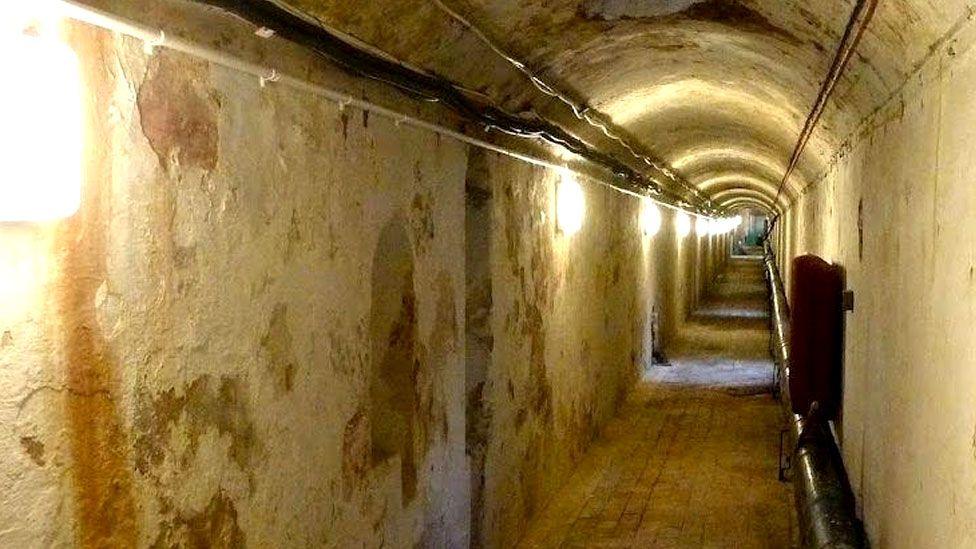
- Published17 February 2024
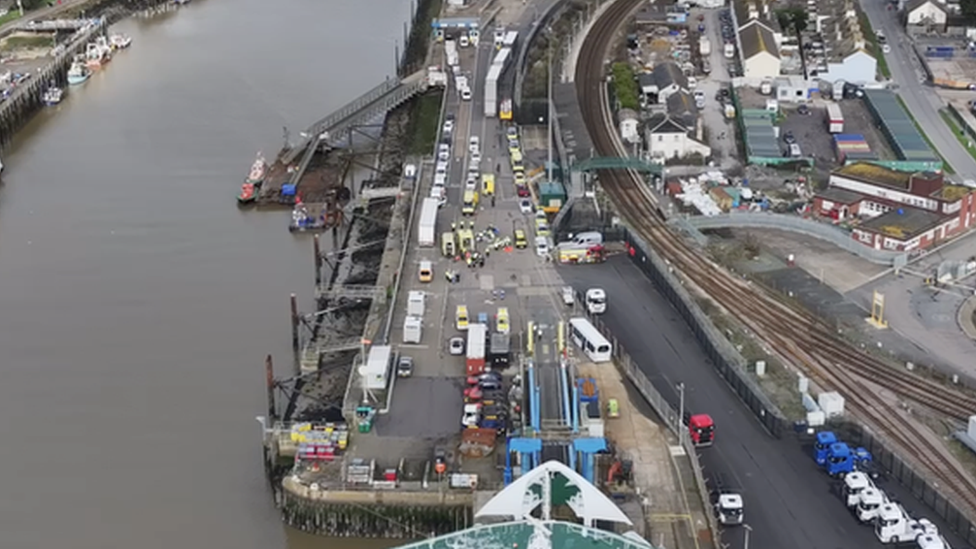
- Published14 April 2024
